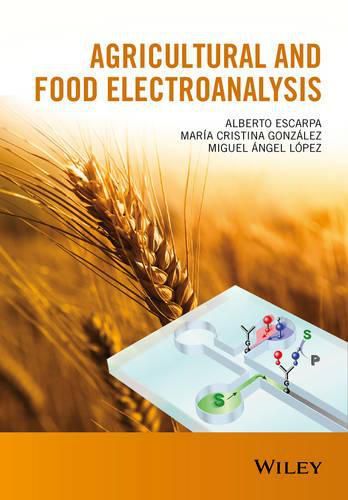Readings Newsletter
Become a Readings Member to make your shopping experience even easier.
Sign in or sign up for free!
You’re not far away from qualifying for FREE standard shipping within Australia
You’ve qualified for FREE standard shipping within Australia
The cart is loading…






Agricultural and Food Electroanalysis offers a comprehensive rationale of electroanalysis, revealing its enormous potential in agricultural food analysis. A unique approach is used which fills a gap in the literature by bringing in applications to everyday problems.
This timely text presents in-depth descriptions about different electrochemical techniques following their basic principles, instrumentation and main applications. Such techniques offer invaluable features such as inherent miniaturization, high sensitivity and selectivity, low cost, independence of sample turbidity, high compatibility with modern technologies such as microchips and biosensors, and the use of exciting nanomaterials such as nanoparticles, nanotubes and nanowires.
Due to the advantages that modern electroanalytical techniques bring to food analysis, and the huge importance and emphasis given today to food quality and safety, this comprehensive work will be an essential read for professionals and researchers working in analytical laboratories and development departments, and a valuable guide for students studying for careers in food science, technology and chemistry.
$9.00 standard shipping within Australia
FREE standard shipping within Australia for orders over $100.00
Express & International shipping calculated at checkout
Agricultural and Food Electroanalysis offers a comprehensive rationale of electroanalysis, revealing its enormous potential in agricultural food analysis. A unique approach is used which fills a gap in the literature by bringing in applications to everyday problems.
This timely text presents in-depth descriptions about different electrochemical techniques following their basic principles, instrumentation and main applications. Such techniques offer invaluable features such as inherent miniaturization, high sensitivity and selectivity, low cost, independence of sample turbidity, high compatibility with modern technologies such as microchips and biosensors, and the use of exciting nanomaterials such as nanoparticles, nanotubes and nanowires.
Due to the advantages that modern electroanalytical techniques bring to food analysis, and the huge importance and emphasis given today to food quality and safety, this comprehensive work will be an essential read for professionals and researchers working in analytical laboratories and development departments, and a valuable guide for students studying for careers in food science, technology and chemistry.